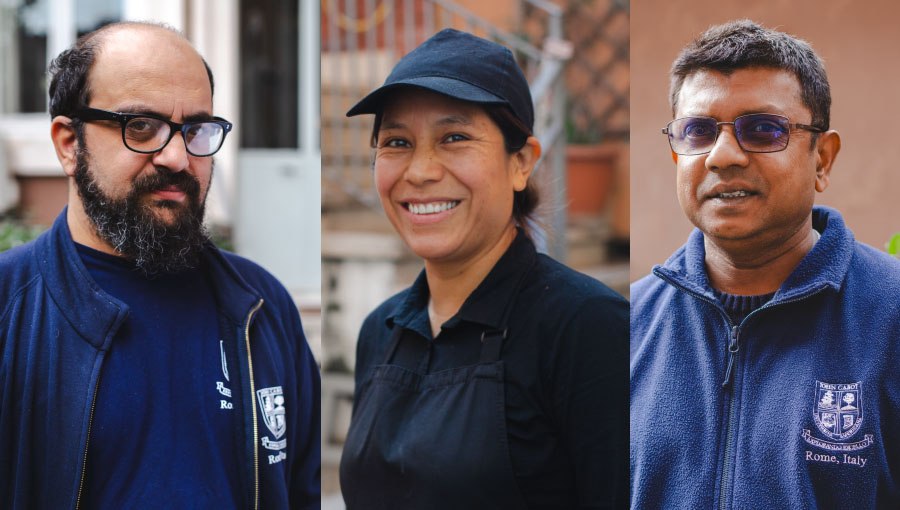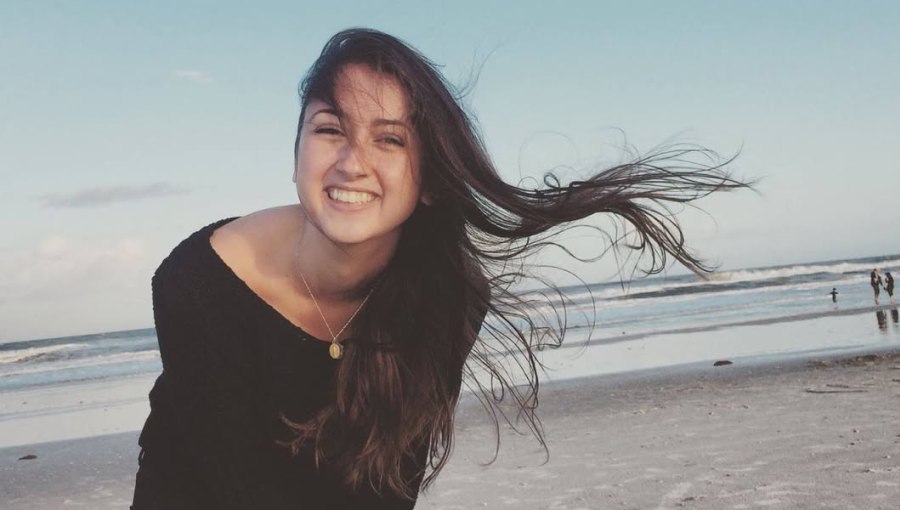Radical Pedagogy in Art History and Practice: Professor Sarah Linford Receives Prestigious Grant
Art historian, curator, and educator specializing in modern and contemporary art, Professor Sarah Linford recently received a grant for her experimental educational and curatorial project L’invenzione della giovinezza (“The Invention of Youth”). Funded by the Fondazione smART – polo per l’arte, it is one of the winning projects chosen by a call for ideas launched by the Foundation in October 2021 to stimulate creativity and contribute to the creation of new connections in the field of contemporary culture. This three-part project experiments with radical pedagogy and the conditions of artistic research, bringing together six mid-career artists and 36 participants, nearly all MFA candidates from the major local institutions of higher learning in the visual arts, public and private: RUFA, NABA, the Academy of Fine Arts, John Cabot University and Temple University Rome.

Professor Sarah Linford
Professor Linford holds a Ph.D. from Princeton University and a Research Doctorate from the Université Blaise Pascal in France. She taught at the Accademia di Belle Arti in Rome before joining JCU’s Art History and Studio Art department. She recently published Force Fields: Rome and Contemporary Printmaking with Devin Kovach (Palombi Editori and Temple University Press, December 2020) and contributed to Une Tradition révolutionnaire. Les Arts figuratifs de Rome à Paris 1905-1940 (Académie de France-Villa Médici, December 2020). In addition to teaching at JCU, Professor Linford teaches all the non studio courses for the painting, sculpture, and graphic arts students enrolled in the MFA program at the Rome University of Fine Arts (RUFA).
Elisa Aceri and Berenice Cocciolillo from JCU’s Web Communications Office recently interviewed Professor Linford.
Congratulations on receiving a grant for your new project L’invenzione della giovinezza! Tell us more about it.
L’invenzione della giovinezza asks: What constitutes “artistic research” today? How is it fostered? What are its criteria? Those derived from canons are no longer operative, either aesthetically or socially.
How did you get the idea?
About eight and a half years ago I moved to Rome and started teaching artists, and found it to be extremely gratifying, because it’s a way of fostering creativity through knowledge. From then onwards I became very interested in historic and contemporary models not just of artistic education, but also the role that institutions play in creating certain kinds of artists and creative practices across the visual arts. Having done a conference on artistic academies in collaboration with the Accademia di San Luca and the Villa Medici a few years ago, and then working increasingly on the notion of “radical pedagogy,” I thought that I would propose this experimental project to the Fondazione smART – polo per l’arte. They agreed to give me the means to try out a series of experimental workshops that were followed by intense collaborations by pairs of artists to break out of traditional models of artistic creation. The project culminates in an exhibition to open in May.
How would you describe radical pedagogy to someone who’s not familiar with it?
Radical pedagogy is usually understood to be a nonhierarchical relationship between teacher and student in order to generate social and political change. That’s the short version. I am proposing a slightly different understanding of radical pedagogy, one that I hope digs a little bit deeper. My hope is to think at a much more fundamental level about the way in which teaching and especially fostering creativity happens by posing certain kinds of challenges that have to do not with imitating what the professor or “maestro” does, or the final outcome, but rather in finding new cognitive solutions and processes to creative problems.
Most of the participants are MFA candidates. Can you tell us a bit about the JCU students who will be participating?
My idea was for the participants to draw on the many institutions of higher education in the fine arts in Rome. It is a good way to get students from around the world who’ve come to Rome to become artists, to work together and collaborate in taking these experimental workshops. In the end we have students from RUFA, from the Nuova Accademia di Belle Arti (NABA), from JCU, from Temple Tyler School of Art Rome, all of which have postgraduate degrees in the Fine Arts. Along with 28 participants from other institutions in Rome, there are four John Cabot undergraduates doing advanced work in studio art and two JCU graduate students doing their MA thesis with me in Art History. One of them is contributing in the context of a research assistantship, documenting the different processes of the workshops, the collaborations between artists, and also the final exhibition for publication that will be printed in time for the exhibition opening. JCU MA candidate Savannah Shaon, who happens to be a professional graphic designer, is doing the graphic design. Getting both master’s students introduced in the institutions of contemporary art in Rome, working professionally at that level, and meeting people from a number of other institutions here, is, I think, going to be good for them, and interesting all around.

L’invenzione della giovinezza participants
What is the importance of artists collaborating beyond the workshop, even if they have very different practices?
It’s essential. And the ways that the workshops have been conceived is that it’s not so much about artists’ technical ability per se, but the different ways in which they’ve been trained to think about making, and their own practice. So the question is less about what kind of specific technical skills they have or need to build, although they’re all interesting emerging artists, but how they have been trained to think about the creation process, the design process, the initial idea and working through materials all the way through to the final stage. It’s the fact that they have very different ways of conceiving their own artistic process that’s essential to me and one of the reasons why they’re so different from each other is the practices themselves are very different, in part because the way they trained as undergraduates is very different. We’ve got students from Italy and the US, but also Ukraine, Russia, China, India, Germany, Cyprus, Azerbaijan, Ecuador, Iran, and several other countries, who have all trained and excelled as students in the fine arts in their home countries before coming to Rome to do an MFA, and that’s important.
What do you hope participants will learn from this workshop?
To think outside their own box and to create the conditions to help them rethink their own “habits of the mind” as practicing artists, to prompt them to think about the nature of artistic research, cognitively and experientially. The secondary learning outcome is about creating deep bonds, connections, and dialogues across institutions and across cultures. It can be very lonely to be an artist, especially for young artists who are not Italian. Many of those mid-career to established artists who were fellows in the foreign academies feel very isolated and don’t really know Rome or other institutions very well, for instance, and when I had the chance of getting them to work together it was hugely gratifying to me because that’s where you have community of good will and productive exchange, and I think a lot of Rome’s potential really comes out when those connections happen.
How can the wider public get involved in artistic education?
By going out and seeing what’s being done. By not being afraid to make things, whether or not one is an artist — on some level that’s a different point. By coming to the exhibition opening. By seeing what kinds of questions are being asked and what kinds of things are being experimented with. And by investing in creativity and artistic education. It may sound a little naïve, but my optimism is not dented and after quite a few years of working in this field I still believe in the value of sustained collaboration and mutual respect.
I think culture has always been an important instrument of diplomacy and also of conflict resolution. And I think on some level art, like education, does that. The more education, the more openness of mind, the more creativity, the more understanding.
The group exhibition of L’Invenzione della giovinezza opens at 3pm Friday, 13 May 2022.





